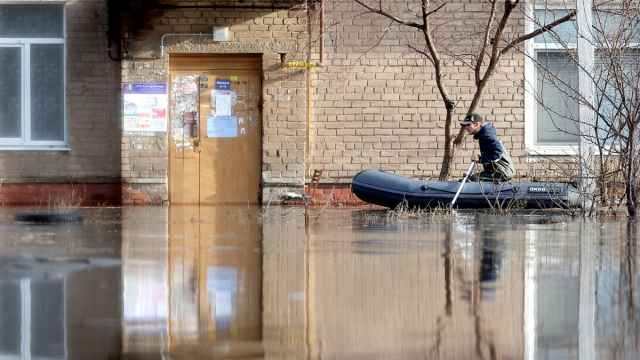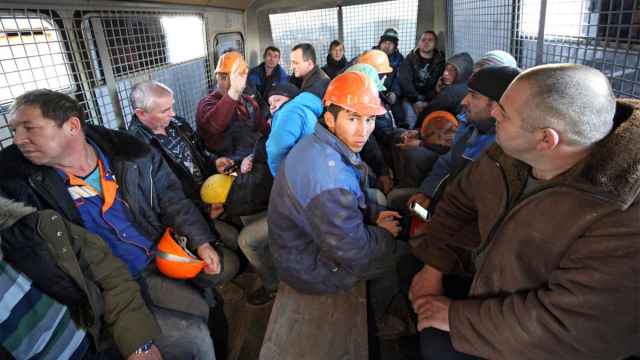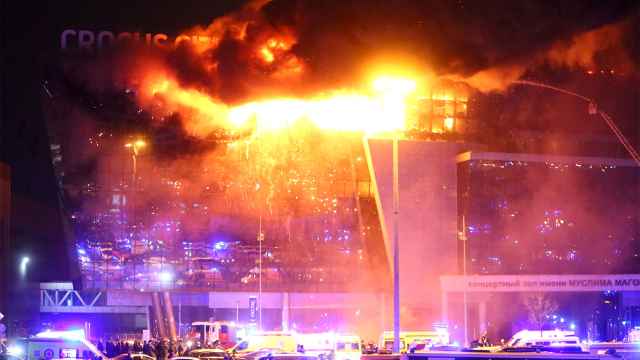Русь: Rus
June 12 is a holiday in Russia, one of the new ones that no one can remember. This one is День России (Russia Day), which sounds very impressive. But what exactly are we celebrating today?
On June 12, 1990, when Российская Советская Федеративная Социалистическая Республика (the Russian Soviet Federative Socialist Republic), aka РСФСР (RSFSR), was still a component part of Союз Советских Социалистических Республик (Union of Soviet Socialist Republics), aka СССР (USSR), the Supreme Soviet — think: Parliament — voted for Декларация о государственном суверенитете Российской Федерации (Declaration of the state sovereignty of the Russian Federation). Got that? This was not the republic’s independence from the Soviet Union, but it was a declaration that Russia could pass its own laws and regulations within the Union. At the time, that was a very big deal.
I thought that this would be a good day to delve into a subject even more arcane than republican sovereignty and even more contentious than the dissolution of the U.S.S.R. I refer, of course, to the derivation of the word that was the progenitor of the name of this great nation: Русь.
And I’m so sorry I did. It is a real mare’s nest — and it has been since 1749 when Gerhard Friederich Mueller, the official Russian Imperial historian and member in good standing of the Russian Academy of Sciences, began to give a speech before the Academy summarizing his research into the origins of the name Русь and the people it described. He had come to the conclusion that Киевская Русь (Kievan Rus) was founded by Scandinavians. The hall erupted in outrage. He never finished his lecture and was forbidden from continuing with his research.
The moral of this story is apparently still relevant today: Never let a Mueller testify.
Back to the Russian story — the very early Russian story — one of the first mentions of these people was in the document called Annales Bertiniani in 839, where they were identified as рос (ros). A few decades later another source identified them as Rousios, which is what the Greeks called them due to their ruddy appearance — that is, they were not dark-skinned like other southerners, but red-skinned, perhaps from the sun. An Arab traveler also noted their ruddy complexion.
The Primary Chronicle, partly written by a monk named Nestor, provides a wealth of confusing and contradictory information. In the first years of the 10th century, he wrote (translated into modern Russian): И пошли (чудь, словене и кривичи) за море к варягам, к руси. Те варяги назывались русью, как другие называются свеи, а иные норманны и англы, а ещё иные готы, — вот так и эти. <…> И от тех варягов прозвалась Русская земля (And they went (the Chuds, Slavs, Krivichi) beyond the sea to the Varangians, to the Rus. Those Varangians were called Rus, just as others are called Swedes, and others Normans and Anglians and other Goths — like them… and the Russian land was named after those Varangians.)
Unfortunately, the Chronicle is ambiguous: sometimes the Varangians and the Rus are one people, sometimes they are not. And it places Slavic people just about everywhere.
But according to one theory, called the Normanist, the Rus were Norsemen, and their name was derived from an old Norse word that meant “men who row.” Although there are some objections to this, mostly connected with how words developed over the centuries, it is supported by some evidence in the Chronicle, like in the passage above. And it’s also supported by the fascinating detail that the local Finnic and Permic people in northern Russia use the same word for Swedes and Russians.
A subset of this theory is that the Rus were originally a class, not a nation, which explains some of the Chronicle confusion.
If you don’t like that version, there is the Slavic theory, which has several subsets. One states that all those “red-faced” names come from the Slavic root that has produced words like рыжий (red-haired). This is supported by the fact that depending on the nation and time period, in the West and Southwest, these people and their lands were called Rhos, Rucia, Ruzzia, Ruzi, Rugii, Ruzzi, Ruzia, Ruzari and Ruzsia.
Another subset of this theory is that that there were Slavic peoples living on one of the tributaries of the Dnieper River, the Ros. Objections to this theory are also connected with word development over the centuries — for complicated linguistic reasons the river Ros wouldn’t mutate to a national group called Rus — and with those ambiguous Primary Chronicles.
Among other theories is the outlier supported by the otherwise great historian Mikhail Lomonosov, who believed that the Slavs were descendants of the Sarmatian people of Iran. There is almost no evidence to support this. But it sounds good.
In short: although there are more likely and less likely theories, no one theory is as yet totally convincing. However, all is not lost. There is new research going on every day, and perhaps there will be a theory accepted by all in our lifetimes.
But if the first part of the story is uncertain, the rest of it is clearer and, in fact, quite illuminating. The word Русь was first applied to the rulers and subjects under Varangian princes in the Kievan realm. Then, beginning in the 10th century, Русь began to mean the Christian inhabitants of that area.
In the 14th century when the power center in Kiev had collapsed, the successor states referred to all the lands once under control of Kiev as Русь. So the lands conquered by the Lithuanians became White Rus (Ruthenia Alba); Black Rus (Ruthenia Nigra); and Red Rus (Ruthenia Rubra). Today “Ruthenia” is used to describe the various national and ethnic groups living in the Transcarpathian region, which had passed from empire to empire over the centuries. The people who lived there eventually began to be called Ruthenians.
In the north, Русь began to be used to describe all the lands under control of Muscovy as well as the lands originally under Kievan control and their inhabitants. These people eventually began to be called Russians.
All of these lands, both under Lithuanian and Moscovy control, were Christian and under the Patriarch of Constantinople. At first there was one Metropolitan in Kiev. But by the 14th century, there were two centers of Christianity: one in Galicia and one in Moscow. The Patriarch established two Metropolitans and to distinguish them, he called the one closest to him in Galicia Mikra Rossiia — inner or Little Rus — and the one farther away in Moscow Megale Rossiia — outer or Great Rus.
All of that puts the whole big-Russia-little-Russia argument in a different light, doesn’t it?
Eventually, after a couple of centuries of name confusion, with foreign powers using two or three names to refer to Moscovy, that growing state in the East, Peter the Great exhibited his greatness by turning Русь into Россия and Московия into Российская Империя (Russian Empire).
This eventually leads to all the name changes in the Soviet and post-Soviet period.
The second moral of this story? In Russia, never ask “What’s in a name?”






